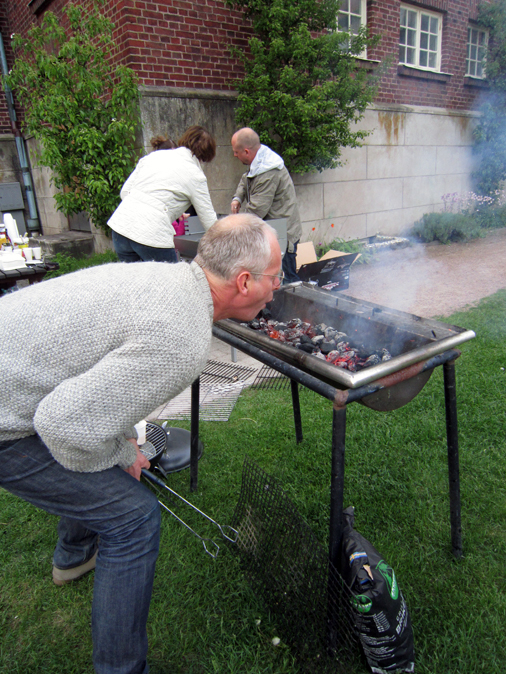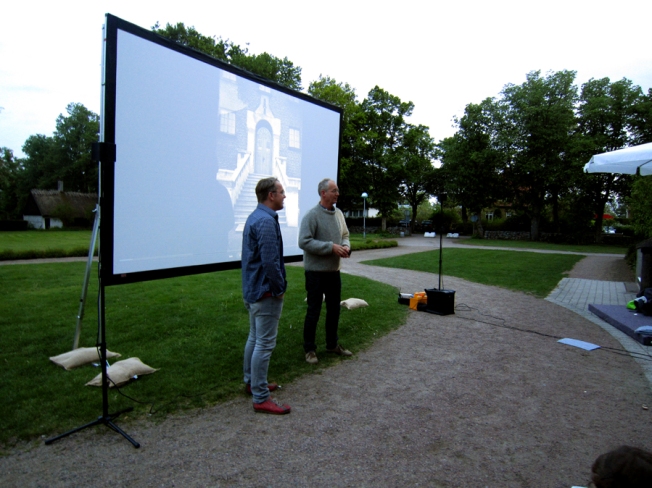The new setup: foldable screen, soundsystem, three batteries charged by solarpanel
First stop: Munka Folk High School
Podiums, parasols, recycled paper blankets
People starting to arrive: students, former students, neighbours, friends
Front stairs of the school will be used as bleachers
Frontal view
Old urinal re-tooled into a barbeque barrel
David Skoog, principal of the art school at Munka Folk High School
David Skoog working the barbeque barrel
Audience
Introducing the Slideshow
Introducing the Future program
View from the podiums
We Have No Art begins
David Skoog viewing from the top of the stairs























